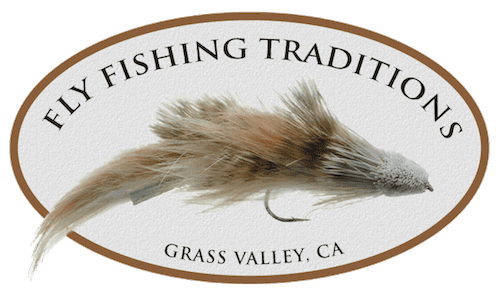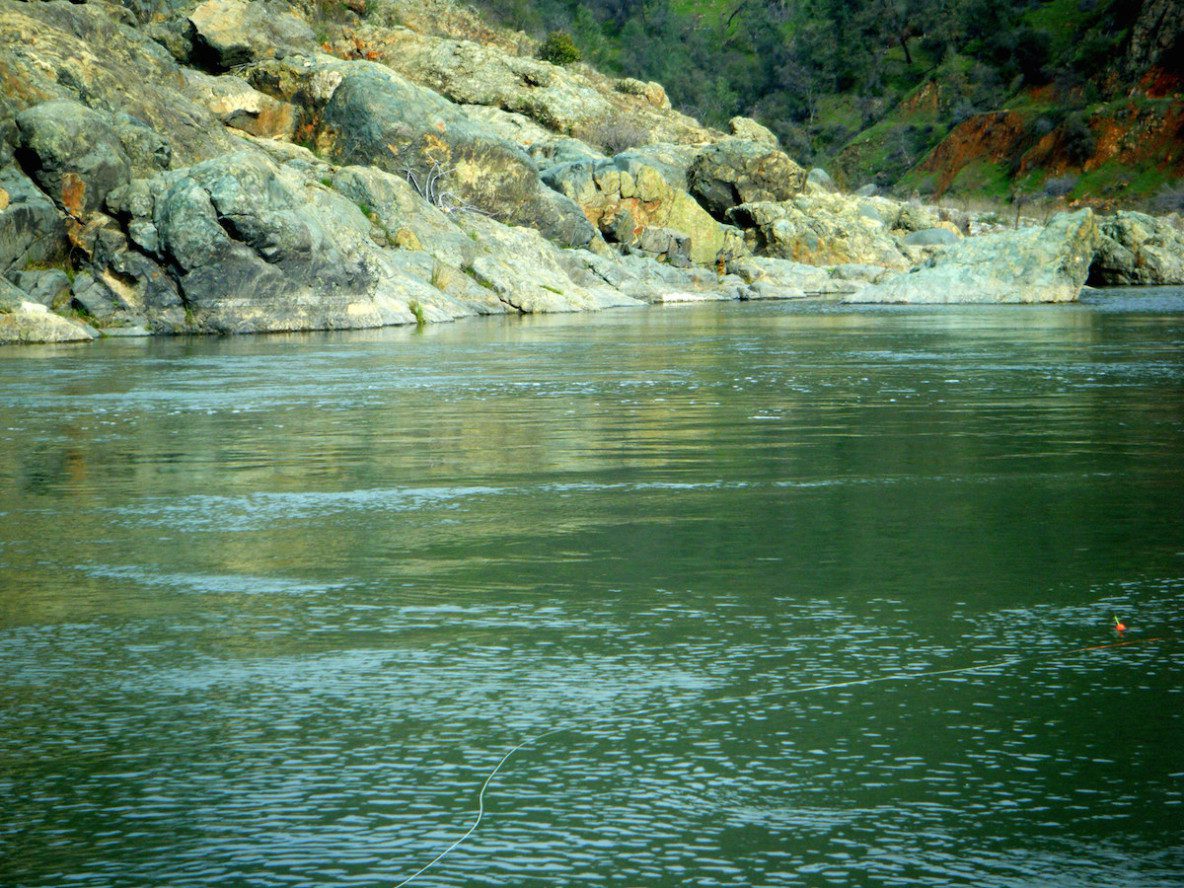I woke up excited to be heading down to the Lower Yuba with my fishing buddies Frank Rinella and Blake Larsen. I’ve been out of town for the Christmas holidays and was ready for a fun day, come what may. The day was clear and fairly warm in Grass Valley. We met in town and grabbed a cup of coffee, talked about the bugs of the Yuba and made our plans for the day. We were looking forward to perhaps a nice PMD hatch coming off? We were a little surprised as we drove down to the river and there was a low overcast at the river. Well I guess it just changed to a BWO hatch.
Our plan was to use my drift boat to cross the river above the launch and hike upstream to fish the runs and flats upstream of our put-in.We had parked one vehicle downstream and would float down in the afternoon and fish the lower area from the boat. We started to hike upstream to spread out and fish the runs there. On the way up I had forgot my camera and hiked back to the boat to get it. On the hike back upstream I hiked along the water’s edge and watched the flats and tailouts to see what was happening.
As I was hiking upstream I reflected on an article that was written by Dave Hughes, either in one of his books or a magazine article where he stated that it’s always a good idea to wait to rigg up until you get where you are planning to fish. When you get to the area sit down for a moment and check out whats going on. That would work well for me because I had not tied anything up yet and I was packing my Sage Z-axis 6 weight switch rod and my Sage XP 5 weight. I could easily rigg up for dries and emergers or go down to fish the bottom.
The key thing from his article that I reflected on was to Watch and Observe, then rigg up and start fishing.
Some questions
There are certain questions that you should ask yourself before you jump in and start fishing.
- Are there any fish rising?
- Are there any bugs on the water or in the air?
- What kind of bugs are they?
- What are the water conditions? Clear, off-color, high, or low?
- How bright is the sun?
- If fish are rising, what are their rise form telling me. Are they taking duns or emergers?
- Are swallows feeding? Are they taking the bugs at the water level or higher in the air?
These are all things that you can think about and digest in a few minutes. The thing I thought about next is that I should do some collecting. I remembered that I used to carry a white lid from a jar that was about 4″ diameter, a small aqurium net and some tweezers. How come I stopped doing that? I’ve made a mental note to do that next time I’m out. Start a “new routine” so to speak. Or I guess I should say an “old routine.”
The Answers
I really should be able to answer questions like;
- What bugs are most abundant?
- How big are they?
- What color are they?
- Which ones are mature and look ready to emerge?
- How do they move in the water?
Size Matters
Once you start collecting samples the real fun begins. Now you don’t have to depend on what all the guys are saying or what they have on the board at the flyshop. Do they really know anyway? It’s pretty easy to say use a Olive Hogan’s S&M nymph for a Blue Wing Olive. But what size are the real bugs? Maybe an Olive Hogan’s Military May in a size twenty would be a better choice. The Military May ties are more slender than the S&M’s. They always say that you need to Match the Hatch! How many times have we heard that. The next time we’re out, while we’re observing the natural insects in that white jar lid of water, we need to put some of our fly patterns in the tray next to them. Match them up. Get your fishing buddies to help out. Do the observation as a team. Discuss bugs. Discuss tactics. Identify the bugs. It’s also a lot of fun
According to Dave Hughes’ buddy, Rick Hafele, an entomologist, his experience is that 90% of the time people rigg up with fly patterns that are two or three time larger than the real thing. This is especially true for nymph patterns. While this may make it easier to tie your fly on to your tippet, it does not make it easier for you to catch fish with them.
Size is actually one of the most important aspects of your fly patterns.
In fact Rick Hafele states that he believes size is more important than color or even shape, though shape also affects size. For example, a fat fly pattern, even when it is the right length, will appear too large when it is imitating a small slender swimming mayfly. Hence the example of the S&M (fatter) versus the Military May (more slender). Fish tend to concentrate on what’s most abundant and available. Pick a fly pattern that matches the size of what you observed as most abundant.
Presentation
Now I need to take all that I have just observed and think about how and where the trout are feeding on the bugs. Now is the time to rigg up and start fishing. Oh yeah. How should I present the flies I’ve chosen? This brings up another bunch of questions.
- What patterns might be effective?
- What part of the water column should I target?
- Should I be fishing dries or emergers on the surface or should I try my subsurface options
- Should I use my nymph rod or my dry rod?
- How should I rigg up to be most effective
- What type of lines should I use?
- If nymphing, how deep?
- Dead drifted under indicator, tight lined or swinging?
Summary
These are all things best contemplated before you rigg up the first time. How many times have you decided how you are going to rigg up and what flies you are going to fish before you even get to the river. Probably a lot. Take your time. Take a breather. Watch and Observe and then go out and get in the river and present your flies properly.

